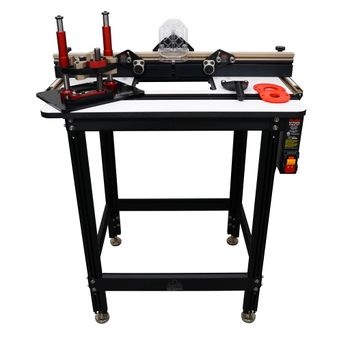Router Table: Difference between revisions
Jump to navigation
Jump to search
No edit summary |
|||
| Line 3: | Line 3: | ||
[[Image: jessem_09422.jpg|350px| JessEm Model: 09422 Router Table]] | [[Image: jessem_09422.jpg|350px| JessEm Model: 09422 Router Table]] | ||
==Description== | ==Description== | ||
The router table is an essential tool for woodshops. The tool allows you to cut rabbets, put edge finishes and make moldings. The tool is helpful if you need to round over or chamfer the edges of your woodworking project. You can also cut slots into the material to make interlocking boxes or sliding shelving. | |||
==Training== | ==Training== | ||
Training is required to use this tool. The training module will be posted [https://myelms.umd.edu/courses/1274047 here]. | Training is required to use this tool. The training module will be posted [https://myelms.umd.edu/courses/1274047 here]. | ||
Revision as of 20:02, 2 August 2020
Description
The router table is an essential tool for woodshops. The tool allows you to cut rabbets, put edge finishes and make moldings. The tool is helpful if you need to round over or chamfer the edges of your woodworking project. You can also cut slots into the material to make interlocking boxes or sliding shelving.
Training
Training is required to use this tool. The training module will be posted here.
Tips & Tricks
- Always watch your fingers when using the tool, keep aways from the bit and use the finger safety guard whenever possible.
- Unplug the router from the outlet when changing a cutting bit.
- Check that the correct depth of the bit is set to avoid cutting too much/too little.
- Wear safety glasses and gloves when using the tool.
- Run the material opposite to the direction of the spinning bit to avoid kickback.
Manuals
A pdf copy of the manual can be viewed on the sandbox shared drive here.
Consumables
- Bits - The primary consumable of this tool are cutting bits. Contact a manager in case a bit is broken/missing.
